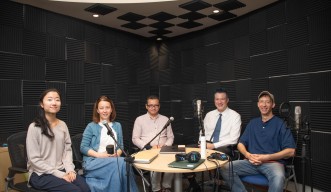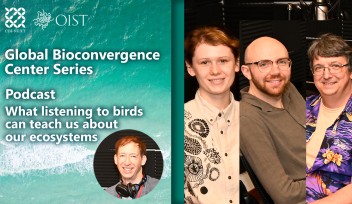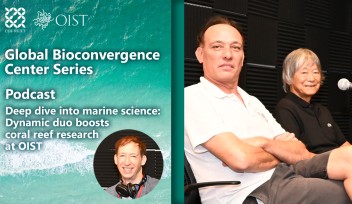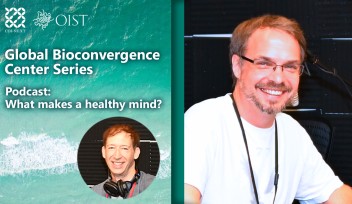One World, One Health: The Global Bioconvergence Center of Innovation’s quest for sustainable solutions
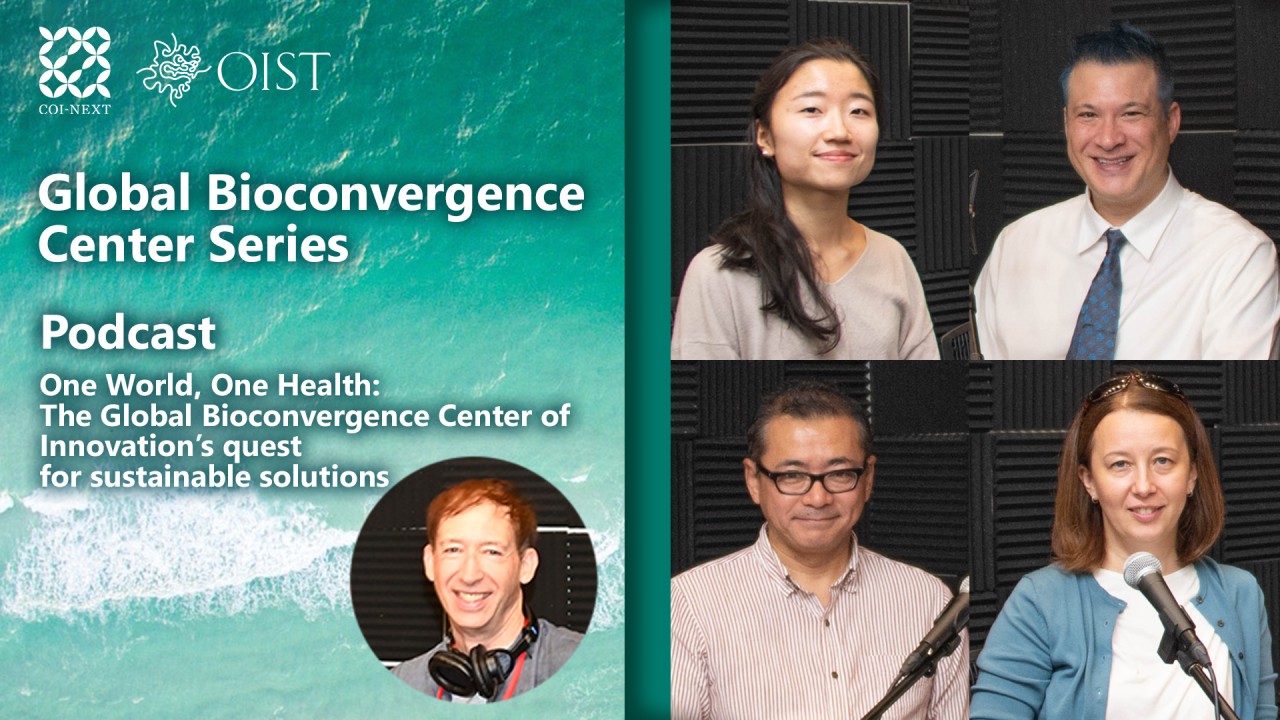
The Global Bioconvergence Center of Innovation at the Okinawa Institute of Science and Technology (OIST) is led by a small, yet dynamic team, and in this podcast episode DJ Nick Luscombe, OIST Podcaster in Residence, speaks to the team members about the highlights and challenges of pursuing the new center’s long-term objectives:
Nicholas Luscombe, Dean of Research and head of the Genomics and Regulatory Systems Unit at OIST, is the project leader for the Japan Science and Technology Agency (JST) grant awarded to OIST for the establishment and operation of the center.
Yasunobu Tanaka, Business Development Director, manages the operations of the center.
Natalia Koshkina, R&D Projects Coordinator, oversees communications between researchers in different research streams.
Ena Ozawa, Project Administrator, manages events and communications with collaborators.
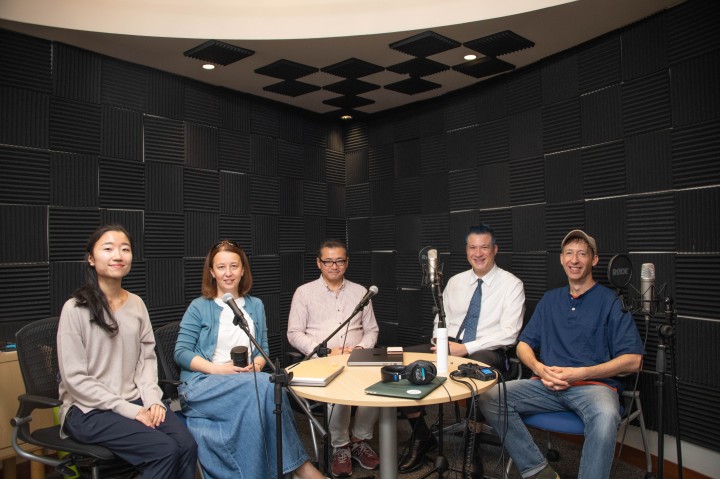
Helping society through research
The center aims to enable collaborations between OIST researchers and external partners in the industrial, financial, and public sectors. The overarching goal is to see how the fundamental research done at OIST can have a positive impact on society, both locally in Okinawa and Japan, and globally.
Research at the center focuses on three interconnected themes — mental health, physical health, and environmental health — and includes projects on longevity, Okinawan biodiversity, and the human gut microbiome.
“The bioconvergence element is to see how these different streams of health and different parts of society and our environment converge together to create an entire healthy ecosystem,” Prof. Luscombe explained.
The project is still very new. “We’re about a year into a 10-year project and really what we’ve started off with is a lot of disparate, quite separate projects across our university by gathering any researcher who might be interested in participating, but then, over the coming years, we wish to sort of integrate and converge the different types of research being performed in different labs so that they intersect and come towards this holistic view of a healthy environment.”
With more than 25 years of experience working in Japanese industries, Dr. Tanaka’s expertise significantly benefits the team. “Throughout my career I have worked and learnt how to realize the scientific discoveries of cutting-edge science into what this society needs. So that is my motivation to work here,” he remarked.
Strengths and challenges
Having numerous international scientists with diverse research backgrounds helps promote interdisciplinary research, but interacting with these colleagues and various institutions to achieve the center’s goals can be challenging.
For Natalia Koshkina trying to bridge the gap between basic science and societal applications is the most exciting and challenging part of the project. “Our role as a team is to try to find ways to help OIST researchers to find this way from their basic fundamental research to the real-world applications that would tangibly improve our everyday lives,” she explained.
To start with, the center has partnered with 30 industrial and academic organizations, one of the most prominent is Suntory Holdings Limited in the field of aging. Local collaborations with Okinawan partners include working with hotels in Onna Village to protect the marine ecosystem and educate tourists on marine biodiversity. The center also works with local villages and fisheries to promote farming and fishing activities that help preserve local biodiversity.
The core team ensures the smooth running of the center which allows exciting scientific collaborations to unfold. Additionally, the 10-year project will provide excellent opportunities for the growth and impact of OIST.
For more information on the Global Bioconvergence Center of Innovation’s goals and projects, see here. To listen to previous episodes of OIST’s Global Bioconvergence Center podcast series with DJ Nick Luscombe, see here.
Research Unit
For press enquiries:
Press Inquiry Form










